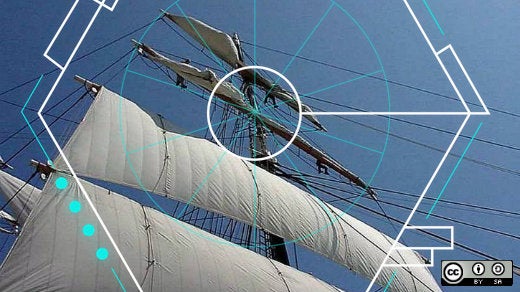Each year, my favorite open source software survey asks "Where is the future of open source taking us?" I like to try to think far into the future. Not next year or the next five, but where can the horizon of open source and its unique mix of collaborative ideals and communal practices take us?
One such "out there" aspect of open source, that I think will eventually come to fruition, is that of UX. When I talk of UX, I mean User eXperience. It is a parent or superset of UI, the User Interface, or what we see. UX handles so much more than UI. The entire session that a human has with a system or piece of software is considered in UX. "Did I intuitively understand what steps I had to take to complete my task?" "Did various components of the system integrate smoothly, not only visually, but contextually and in a similar pattern?" UX is not just the looks, but how an end-user perceives their entire experience.
The proof is in the pudding
End user eXperiences and the interfaces they touch are pivotal to successful information technology. This has played out in the consumer space by the likes of Apple, a closed ecosystem, that has shown users will accept closed if it has a velvety smooth feel and integration. In the enterprise software world user experiences at Google, Salesforce, Dropbox, and Atlassian are edging out entrenched legacy experiences [1][2].
"We certainly consider UX as a key motivator for open source practitioners to come to Microsoft’s cloud platform, and we strive to offer consistent, engaging experiences that go beyond visuals and across screens and tools," says Jose Miguel Parrella, an expert in the open source world and proof of Microsoft’s strategic open source and UX direction.
Expectedly, UX has played out in some open source projects such as Mozilla’s Firefox and Google’s Chrome, where first Mozilla beat out Microsoft with new looks, features, and standards compliance that ultimately gave the end user a better feeling. Chrome has now usurped the title by innovating on UX features like tab syncing across all major platforms and a slick omnibar that offers both URL and search entry in one.
In my opinion, and one supported by others, open source as a majority has not excelled let alone mastered UX. We know this. We know many of the reasons for this. Yet it is still out there. Pockets of open source do it right (Ubuntu, Chromium), however the vast majority are only semi skilled at it. Therefore, the bulk of super successful open source software has been limited to IT backend infrastructure and software development. It's why the year of the Linux desktop never came. It's why Microsoft Office still exists and flourishes.
So, what is the solution?
Time, investment and respect. Skilled UX visionaries and employees are hard to find (limited in quantity), well-paid, and sometimes removed from the technical aspects that encourage developers to become entwined with open source. Encouraging the quantity of UX expertise to increase, and constantly pushing the importance of our end users direct input is key to growing the field. Industry-wide investment of money and resources into hiring and involving UX experts on open source projects is a key tipping point.
The most important aspect is building the respect, acceptance, and understanding among software developers, technical product managers, and their business managers for said UX-minded influences.
"Culture remains the #1 challenge. Usability and design principles are not a new idea to FLOSS—these principles have been known for 15 years. The most successful projects have managed to change their developer culture to equally accept a range of non-coder contributions,” says former KDE design-lead and board member, Celeste Lyn Paul.
I too believe there is a cultural divide that some software developers have—shoot I have had it—when someone else comes and says that your flow is all wrong and you should consider redoing it all to ease your users woes. Well, let's not have that. Similar to 'Continuous Integration' building-in quality on a daily automated basis, let's build-in User eXperience by default, from the beginning, every day. Instead of rebuilding afterwards, UX is involved early. For in-depth suggestions, check out Jan Borchardt’s Usability in Free Software e-book and Open Usability blueprints.
Open source has to migrate from scratching an itch, to an integrated culture that includes everyone from business-ideation to users to operations and developers. That future of open source will take on the world.
For the past few years, I have taken the following survey and closely groked the amazing infographics that it supplies to the world. This year, I personally want to invite everyone to take part and listen-in. Where do you think open source will go in the future? Let your voice be heard, answer the 2015 Future of Open Source survey. (Survey closes March 6, 2015.)
References
[2] https://www.wired.com/2014/03/enterprise-ux-paradigm-shifts/






9 Comments